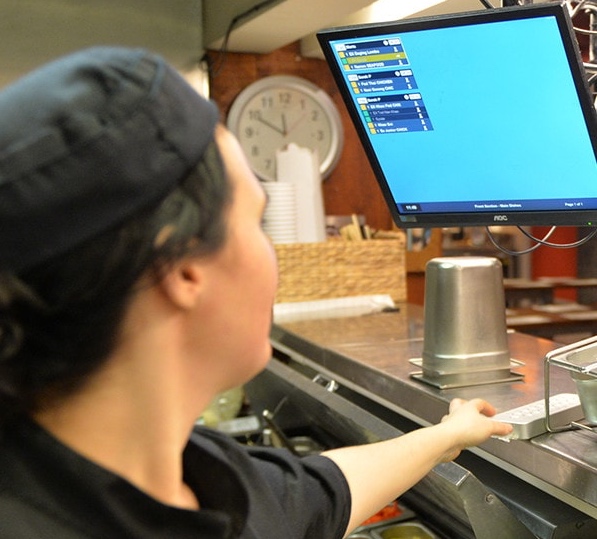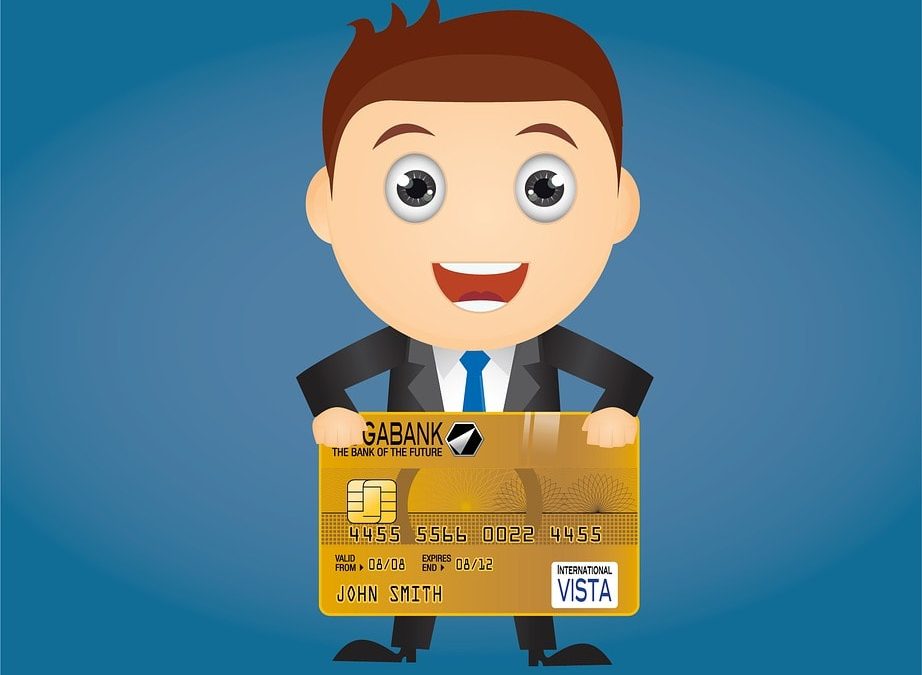
Do you have friends or family members that are gluten free?
It’s becoming growingly more important for restaurants, cafes, and coffee shops to offer items that appeal to those with allergies and special diets. Many people have at least one family member that falls into the “special diet” category, if not more. You could be unknowingly turning away potential customers by not advertising or modifying dishes for customers who follow special diets. Restaurants, including chains and small mom-and-pop shops are offering special menu items and modifications for those with special diets and allergies.
The Gluten Free marketing is growing rapidly. Gluten Free foods are becoming more and more popular for health reason, allergies, and Celiac’s Disease. According to NPR, 1/3 of people are trying to avoid gluten. Menu items can sometimes be made gluten free with a few modifications.
What is gluten?
Gluten is a protein found in wheat, barley, and rye. Some people choose to eat gluten free to lose weight, be healthier, or because they have an allergy. Celiac’s Disease affects around 1 in 100 people, and is an autoimmune disease, that causes damage to the small intestine when eating gluten. A customer with Celiac’s Disease must not have any cross contamination. Small amounts of gluten can cause damage.
Modifications
The National Restaurant Association released a back of house guide for gluten free dining. The guide has many great tips to avoid cross contamination, such as using a dedicated fryer, prep space, and cookware. Education is important for staff. Gluten free can be more than a lifestyle. Your staff should know exactly what gluten is and avoid any cross contamination. For someone with Celiac’s Disease, cross contamination is extremely serious.
Dishes can often be easily modified using gluten free pasta, bread, and dough. Many pizza places like Blaze Pizza and Mellow Mushroom offer gluten free dough. Olive Garden offers gluten free pasta. Chick-fil-A recently announced they will be offering gluten free buns.
Are your burgers naturally gluten free? Could you offer corn tortillas and tortilla chips instead of flour? What about gluten free pasta? These easy modifications could increase your customer base.
Double check your ingredients carefully. Gluten can be sneaky. It can be found in soy sauces (opt for a gluten-free brand, it tastes the same), beer (offer a gluten free one), malt (think malted milkshakes or malt vinegar), sauces and gravies (made with soy sauce or wheat as a thickener).
Label and advertise
Once you know your gluten free menu items, start labelling and marketing them. Typically gluten free is indicated by (GF). You could also offer a gluten free menu, or advertise that you offer gluten free pasta or buns. The National Restaurant Associate overviewed the FDA regulations in gluten free labeling.
There are a few phone apps and websites that help those who are Gluten Free find local restaurants that offer gluten free foods.
• Allergy Eats
• Find Me Gluten Free
• Gluten Free Travel Site
You can also use social media to advertise your gluten free options. Gluten Free is very popular on social media. The Gluten Free community is tight knit and shares gluten free finds all over the world.
Adding Gluten Free menu modifications and labeling will help attract customers you may have be turning away. Many people have a friend or family member who is gluten free. If they do not know your restaurant can accommodate, they might chose your competitor instead for a meal out. If you decide to offer gluten free options, make sure your staff is knowledgable and your kitchen can prepare the foods without cross contamination.

What do people see when they Google your business? Do you have a website? Does it show up on Google? Are there any reviews? Are they positive? How many stars do you have on Yelp!? Do the pictures of your food look good?
Digital Word of Mouth
Before iPhones and laptops became all the rage, restaurants, bars, and other businesses relied on traditional word of mouth to encourage business. They would use coupons, get listed in the Yellow Pages, or maybe put an advertisement in the local paper, but the biggest seller was customers raving about their business to their friends, family, and colleagues. Today word of mouth has turned digital. Customers are turning online when deciding where to go. Online sites like Yelp! let customers publicly rate their experiences. People are trusting other customers more than ads. What motivation does a customer have to write a bad review on Yelp!? It creates a sense of honesty and trust.
Online Identity
Today’s restaurants, bars, and cafes need to have an online identity. Customers are searching online for their next meal. If you do not have a website, Facebook, online menu, or Yelp! page, you could easily be overlooked by your competitor who’s online presence is full of mouthwatering pictures and stellar reviews.
Not all websites are created equal. A bad website that isn’t user friendly or filled with a accurate data can suggest the business isn’t modern enough, it’s not up-to-date with the times. Today’s consumers have become very visually oriented. Millennials want to see drool worthy pictures. They want to check your business’s Instagram, follow you to see amazing specials that are too good to pass up.
Is your website mobile friendly? Most customers are searching for restaurants on the go, using their smartphones. Is your menu too hard to read? Can you zoom in and read the font? Do you label your gluten free, vegan, and vegetarian items? These special customers tend to plan ahead, since they can not eat everywhere. If you’re special dietary options aren’t labeled, you may be turning away potential customers.
Social Media
According to a new Facebook study at least 1/3 of restaurant and bar patrons use Facebook or Instagram. People are influenced by the delicious pictures and positive reviews on their social media feeds.
If the modern person is hungry, they can use the Yelp! app to find the best restaurants, bars, coffees, etc near them. It can be as specific as gluten free muffins or broad like Tacos. When trying a new restaurant, some people like to see pictures of the food, reviews, and even the menu.
Yelp! has become the leader in online reviews for restaurants and small businesses. First time customers want to be reassured they will have a good experience. They check to see how many stars your restaurant has. They look at pictures, read reviews. Does your restaurant have a Yelp! page? Are the reviews positive? Bad online reviews could be secretly hurting your business.
Loyalty
So you have an easy-to-navigate website with some good pictures, a relatively active social media presence, and good Yelp! reviews, now what? Comprehensive and integrated customer loyalty programs are taking businesses to the level. Your customer’s inboxes are being flooded with emails every day from businesses like your own. Your email can easily get lost in the shuffle and sent to spam or left unread. Restaurants can benefit from using SMS (text messages) https://www.modernrestaurantmanagement.com/how-restaurants-can-benefit-from-sms/ as part of their marketing plan. Zonal’s app based loyalty program uses SMS and even push notifications to send rewards, coupons, and marketing nudges directly to their phones
Adapting to the digital age is easy. It is free to create to create Facebook, Instagram, and Twitter pages for your business. Uploading pictures and posting about new specials or menu items takes only a few minutes a day. Quality pictures can be taken with a smartphone and good lighting. Simple websites can be created on sites like wix.com for those on a budget. You want to have an easy-to-read menu, contact information, and great pictures. An online identity is as important as having a sign in front of your business.

Among the top customer complaints in the restaurant industry are inaccurate orders and slow service. People do not enjoy waiting, especially when they are hungry. Hungry can turn to “hangry” quickly, and lead to unhappy customers. A sandwich cooked too little or too much, or missing cheese, or having cheese, could easily upset a customer, especially when paired with a long wait time.
In the digital age we live in, unhappy customers are more likely to turn to social media sites like Yelp! or Facebook than quietly fill out a comment card to vocalize their dissatisfaction. Not only may they not come back, but their bad reviews may deter potential customers who were reading online reviews to help decide where to eat.
Before the days of the digital POS, cash registers were how customers would pay for their meals. Servers would scribble orders down on a piece of paper and give them to the kitchen. The kitchen staff would have to spend time deciphering the handwriting with all of the various modifications and instructions. When the order was complete, they would ring a bell and yell “order up!” The server would have to pay attention and get to the food before it was cold. This method leaves a lot of room for error.
Once today’s point of sale systems became mainstream, the option sprung up of being able to print tickets. The server would input the orders into the POS, using modifiers and adding instructions, and then print the order, called a “ticket.” This got rid of the need to read scribbles, enhancing the server-kitchen communication. This method is still used today, but is not as efficient as a Kitchen Display System (KDS).
KDS are screens (think computer or TV) that digitally display orders directly from the point of sale, adding a direct stream of communication from server to kitchen. KDS eliminate paper costs and visually display orders. Kitchen staff can more easily keep their heads above water during a rush without having to scramble to read bits of paper.
Zonal KDS integrate with the POS system, making it simple to add modifications and food allergy special instructions. The KDS screens are easily customizable and have color coded options to insure accuracy. Kitchen Display Systems allow for reporting information which isn’t available with handwritten or most printed tickets. Managers can track order times during peak hours and see what needs improvement. It can help monitor the overall efficiency of the restaurant.
KDS are a modern way for servers and kitchen staff to communicate orders to enhance efficiency and accuracy. Customers want their orders to be timely and correct. Kitchen Display Systems are a great alternative to handwritten and printed tickets. KDS takes advantage of technology and integrates with POS to give customers an overall better experience.

Many restaurants, cafes, bars, and even stores are adding handheld tablets to the point of sale. Tablets are easy to hold and give servers and baristas the freedom to take orders at the table or bar instead of the terminal. Tablets are either Android or iOS based and can typically run the same interface as the your other terminals.
Mobility
Handheld point of sale systems allows servers to take orders at the table, saving time and minimizing errors. Customers can have extremely long orders with many modifications, and without a handheld POS, servers have to either remember the orders or spend time writing them down and then imputing them into a terminal. Servers are more accessible as they do not need to go to a terminal, so they can stay on the floor.
Nordstrom introduced handheld POS systems to reduce lines at checkout. Customers can check out anywhere in the store and receive a paperless receipt. A spokesperson for the company, Colin Johnson said the handheld POS take care of customer anywhere in the store. We don’t have to take you to the cash register, and instead, can do that right there with you on dressing room or when you’re trying on shoes – and then you’re on your way…that kind of ability to increase speed and convenience is increasingly important.”
Efficiency
Many POS providers offer both tablet and traditional terminals. A handheld tablet can be an excellent addition, as it can increase efficiency. The tablets can have the same interface as the terminals, leaving no downtime for training and seamless integration. Servers do not have to wait in line to input an order at the terminal. The orders can be sent directly to the kitchen.
Chick-fil-a introduced handhelds to their drive through ordering to help speed up the lines during the lunch and dinner rushes. Friendly employees stood in the drive through lines offering face-to-face ordering while the customer was in line. This helped boost customer satisfaction and efficiency but cutting down the wait times.
Accuracy
Customers speak a mile a minute, and create custom orders and modifications. Servers either have to remember the whole table’s unique orders or spend the time writing it down. Using a handheld tablet, they are able to input the orders quickly, as the customer says them, and then move on to the next table. Checkout can be done at the table, with the card never leaving the customer’s site, this reduces error.
Handheld tablets shave off minutes of ordering which in turn boost profits. The extra minutes can quicken table turnover and shorten wait times.

Transitioning to EMV payments
The days of swiping debit/credit cards are becoming obsolete, replaced with the new standard for payment, EMV. EMV stands for Europay, Mastercard, and Visa, the founders of the new “chip card” payment. Many new debit and credit cards are now being created with a microchip in the card, which replaces the magnet strip.
Why EMV?
EMV has become a global movement, which has already taken off and become the standard in Europe, to help reduce fraud and protect sensitive data. The chip card was first used in France in 1992. The United States is one of the last major players to switch over to EMV.
Credit and debit card fraud is a big issue, especially in the United States. Magnetic strip credit and debit cards can be stolen or duplicated with an inexpensive device. The chip in the EMV cards is harder to replicate, compared to the magnetic strips, helping reduce on-site fraud. It creates a unique code for each transaction that cannot be used again, for added security. Even if a point of sale system were hacked, the hackers wouldn’t be able to use the chip cards on file as the unique transaction number can’t be used twice or used to trace the card number.
According to Visa, there has been a “52 percent decrease in counterfeit fraud at chip-enabled merchants in September 2016 compared to a year earlier.” As of the same 2016 report, 39 percent of merchants in the US accept chip cards.
How does this affect your business?
If you haven’t migrated yet, you could be held liable for fraudulent transactions occurring at your business. As of October 1st, 2015, businesses that have not switched to EMV payments can be held responsible for the amount of the fraudulent purchases, instead of the credit card companies. The credit card companies will only cover the cost of the fraudulent charge if EMV payment has been implemented. The EMV switch did not affect liability in regards to data breaches or ecommerce transactions, where the “card isn’t present.”
At the moment the use of EMV is not mandatory; it is incentivized by the liability shift. More places are going to switch over, one day making magnetic strip cards obsolete. Customers used to EMV payments may feel less secure and question businesses that have not migrated over yet.
If you’re a new business looking to choose a point of sale provider, ask if their system accepts EMV payments. Businesses may also be able to integrate an EMV card processor to their existing POS system, depending on the compatibility.





